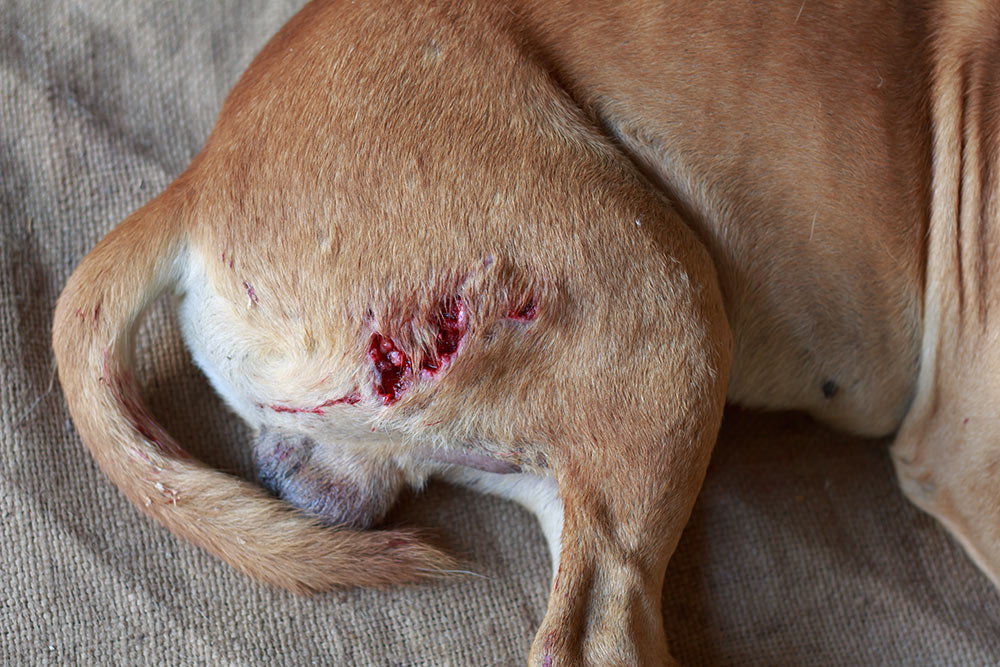Pets bring joy, companionship, and unconditional love to our lives. Whether you have a furry friend or a scaly companion, their safety and well-being should always be a top priority. Unfortunately, accidents and injuries can happen, even to our beloved pets. In this article, we will explore common pet injuries, their prevention, and treatment options to ensure your furry or feathery friend stays happy and healthy.
Pets, whether dogs, cats, birds, or reptiles, often become cherished members of our families. However, just like humans, pets are susceptible to injuries. Understanding common pet injuries, their prevention, and how to provide appropriate treatment is essential for every pet owner.
Contents
Understanding Common Pet Injuries
Sprains and Strains

Sprains and strains are among the most frequent injuries seen in pets. These injuries often occur due to falls, slips, or overexertion. Symptoms may include limping, swelling, and pain. Rest, restricted movement, and veterinary guidance are crucial for a speedy recovery.
Cuts and Abrasions

Pets can quickly get cuts or abrasions from various sources, such as sharp objects or encounters with other animals. Keeping a pet’s wound clean is essential to prevent infection. Applying gentle pressure to stop bleeding and seeking veterinary care for more profound injuries is advisable.
Broken Bones

Broken bones can occur in pets due to accidents, falls, or trauma. Symptoms include swelling, pain, and reluctance to use the injured limb. In such cases, attempting to set the bone yourself is optional. Instead, seek immediate veterinary assistance for proper diagnosis and treatment.
Poisoning
Pets are naturally curious creatures, and they may ingest toxic substances accidentally. Everyday household items such as cleaning products, medications, or certain plants can harm pets. If you suspect your pet has ingested something poisonous, immediately contact your veterinarian or a pet poison helpline.
Heatstroke

Pets, especially those with thick fur or brachycephalic breeds, are vulnerable to heatstroke. Symptoms include excessive panting, drooling, weakness, and collapse. Providing a cool and shaded environment, access to fresh water, and avoiding leaving pets in hot cars is crucial.
Preventing Common Pets Injuries
Providing a Safe Environment
Creating a safe environment for your pet is essential to prevent injuries. Secure fences and gates, remove hazardous objects, and ensure electrical cords are out of reach. Consider your pet’s size, behavior, and potential hazards in the surroundings.
Regular Veterinary Check-ups
Regular visits to the veterinarian can help identify potential health issues and detect early signs of injuries. Vaccinations, parasite prevention, and general health examinations are essential to maintaining your pet’s well-being.
Proper Supervision and Training
Supervising your pet, especially in unfamiliar or potentially dangerous situations, is crucial. Proper training and obedience can minimize the risk of accidents and injuries. Teaching basic commands and socializing your pet with other animals and people is critical to ensuring their safety.
Keeping Toxic Substances Away
Toxic substances should be securely stored and kept out of your pet’s reach. This includes cleaning products, medications, certain foods, and plants that are toxic to pets. Be aware of potential dangers and take preventive measures to avoid accidental poisoning.
Managing Temperature and Weather Conditions
Extreme temperatures can pose a risk to pets. During hot weather, provide access to shade and fresh water, and avoid leaving pets in vehicles. In cold weather, provide appropriate shelter and protective clothing if needed. Remember that pets are sensitive to temperature changes and require proper care accordingly.
First Aid for Common Pets Injuries
Assessing the Situation
When your pet is injured, assessing the situation calmly and promptly is essential. Check for any immediate danger and ensure you and your pet are safe. If necessary, muzzle your pet to prevent bites or scratches while providing first aid.
Also Read: 10 Best Helpful Tips for Walking Your Dog
Handling Cuts and Wounds
For minor cuts and wounds, clean the area gently with mild antiseptic and apply a pet-safe antibiotic ointment. Use sterile gauze or a clean cloth to apply pressure if bleeding occurs. Deep or severe wounds require immediate veterinary attention.
Treating Sprains and Strains
If your pet experiences a sprain or strain, restrict their movement and provide a comfortable resting area. Applying a cold compress can help reduce swelling. However, consulting with your veterinarian for a proper diagnosis and treatment plan is essential.
Managing Broken Bones
In case of suspected broken bones, immobilize the affected area with a splint or bandage, taking care not to cause additional pain. Transport your pet to the veterinarian immediately for further evaluation and appropriate treatment.
Dealing with Poisoning Incidents
If you suspect your pet has been poisoned, immediately contact your veterinarian or a pet poison helpline. Follow their instructions and do not induce vomiting unless instructed to do so. Bring any packaging or information about the ingested substance to assist with diagnosis and treatment.
Addressing Heatstroke
Heatstroke is a medical emergency and requires immediate action. Move your pet to a calm, shaded area, and apply cool (not cold) water to their body. Use fans or air conditioning to help lower their body temperature. However, it is vital to seek veterinary attention promptly.
Seeking Veterinary Care
While first aid can be helpful for minor injuries, seeking veterinary care for any significant or ongoing issues is essential. A professional evaluation can ensure proper diagnosis and treatment, preventing complications and promoting faster recovery for your pet.
Conclusion
Injuries can happen to our pets despite our best efforts to protect them. We can significantly reduce the risks by being proactive in creating a safe environment, providing proper training, and recognizing the signs of common pet injuries. Additionally, seeking veterinary care and following professional advice is crucial for the well-being of our furry friends.
FAQs (Frequently Asked Questions)
How can I prevent my pet from getting injured?
To prevent pet injuries, create a safe environment, supervise your pet, and provide regular veterinary care. Keep harmful substances out of reach and manage temperature conditions appropriately.
What should I do if my pet has a cut or wound?
For minor cuts, clean the area gently and apply pet-safe antibiotic ointment. Seek veterinary care for deep or severe wounds.
Can I treat a broken bone at home?
No, broken bones require professional veterinary care. Immobilize the affected area and seek immediate veterinary attention.
Are all plants poisonous to pets?
No, not all plants are poisonous to pets. However, some common houseplants and garden plants can be toxic. Research and ensure your home or garden plants are safe for your pet.
How can I recognize the signs of heatstroke in my pet?
Signs of heatstroke in pets include excessive panting, drooling, weakness, and collapse. Move your pet to a cool area, provide water, and seek veterinary help immediately.
